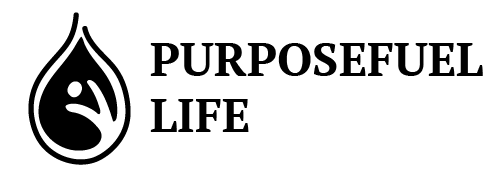- Circadian Rhythm Optimization: The Foundation of Everyday Health
- Energy Management vs. Time Management: Why Scheduling Everything Destroys Your Flow
- Breath and Movement: The Fastest Way to Boost Energy (No Coffee Required)
- Active Recovery Practices: Why Doing Nothing Is the Real Mistake
- Sleep Quality Basics: Why “8 Hours” Isn’t Enough
- Why You Still Feel Exhausted (Even When You Are Productive)
- You Do Not Need More Time. You Need a New Nervous System.
Table of Contents
Most people breathe wrong.
That sounds dramatic. It is.
You might think breathing is automatic. How can it be wrong? But that assumption costs people more energy, clarity, and focus than they realise.
When you breathe shallow, high in your chest, it mirrors the exact pattern your body uses when you are stressed or panicked. Even sitting calmly at your desk, shallow breathing tells your nervous system something is wrong. Stress hormones fire unnecessarily.
Why This Matters
Chronic shallow breathing creates a constant low-level stress loop. Your energy drains faster. Your focus gets scattered. Your recovery stalls.
That is not a minor issue. That is your entire system running on the wrong settings.
The Hidden Energy Leak: Chest Breathing
Chest breathing locks you into a fight or flight loop, even when nothing is wrong.
Here is what happens:
- Stress hormones fire up unnecessarily
- Oxygen exchange worsens
- Focus, clarity, and recovery get drained
That is not just poor form. It is a full system misfire.
When you shift to intentional breathwork:
- Oxygen improves
- CO₂ tolerance strengthens
- Parasympathetic calm resets your baseline
This applies whether you use:
- Wim Hof Method (cyclic hyperventilation and retention)
- Kriya Yoga (pranayama and bandhas)
- Box Breathing (the Navy SEAL method)
- Physiological sigh (as taught by Andrew Huberman)
Each method has its role. Each one works as long as you actually use it.
My Baseline Routine: Wim Hof and Movement Reset
Here is what I do every morning:
Step 1: Wim Hof Breathing (3 to 4 rounds)
- 30 to 40 deep breaths
- Relaxed exhale hold
- Recovery inhale
Always seated or lying down—never while driving or in water.
This sets mental clarity, physical wake up, and nervous system balance.
Step 2: Gentle Movement Flow
- Cat-Cow stretches
- Spinal twists
- Hip openers
All synced with easy nasal breathing or the calm after breathwork.
When I have more time or need sharper focus, I add:
- Kriya-style breath holding
- 10 to 15 minutes of seated stillness
The breath sets the system. The movement locks it in.
Why Breath Beats Supplements Every Time
No supplement controls your nervous system like conscious breath does.
Consider these sources:
- James Nestor, in Breath: Conscious breathing shapes focus, immune function, and emotional balance.
- Patrick McKeown, in The Oxygen Advantage: CO₂ tolerance links directly to stress resilience and performance.
- Andrew Huberman: The physiological sigh reduces stress instantly.
- Wim Hof Method research: Breath and cold exposure modulate the immune system and autonomic nervous control.
What all these experts show:
Your breath is your first tool. Everything else is secondary.
Between Discipline and Resistance: My Real Experience
Even now, I sometimes feel like skipping it. Morning brain wants to scroll or skip straight to work.
But I have learned this the hard way:
One skipped day turns into two. Two turns into feeling drained, off center, stressed.
That is why I keep breath and movement locked in as non-negotiables.
Not for discipline. For clarity. For system integrity.
How to Start Today
Step 1: Pick Your Tool
- Wim Hof Method: 3 to 4 rounds, daily baseline
- Kriya Yoga: For slower, deeper sessions
- Box Breathing: For midday resets
- Physiological Sigh: Anytime acute stress hits
Step 2: Add Movement Sync
After breathwork, 5 to 10 minutes of gentle flow:
- Spine
- Hips
- Shoulders
- Wrists
Slow, intentional, paired with breathing.
Step 3: Track Energy and Focus
Before breathwork: rate your mood, clarity, and stress.
After breathwork: rate again.
Watch the shift daily.
Why It Matters Systemically
Breathwork is not an optional extra. It is the foundation of:
- Stress resilience
- Cognitive sharpness
- Recovery
- Immune function
- Emotional clarity
When paired with light movement, it upgrades everything else:
- Better sleep
- Faster focus
- Stronger immune response
- Deeper energy flow throughout the day
You do not need supplements or stimulants when you control the system manually.
Your Weekly System
- Morning: 10 to 15 minutes breath and movement reset
- Midday (if needed): 1 to 2 breath-only resets
- Evening: Switch to slow breathing or meditation, not stimulating breathwork
Whether it is Wim Hof, Kriya, or simple nasal breathing, what matters is consistency. One system. Every day.
Why This Is Foundational
Most people ignore breathing until they are stressed or sick. But when you integrate conscious breathwork and light movement as a daily standard, everything else improves:
- Energy
- Sleep
- Focus
- Physical resilience
- Emotional baseline
It becomes part of who you are—not something you do occasionally.
What’s Next in the System
From here, we will dive deeper into:
- Sleep quality and circadian alignment
- Recovery techniques like NSDR
- Mobility, flexibility, and cold exposure
All tied to one core idea:
Control your system, do not react to it.
Your Challenge
Today:
1️⃣ Set aside 10 to 15 minutes. Pick one breathwork method.
2️⃣ Follow with 5 to 10 minutes of light movement.
3️⃣ Log your energy and clarity before and after.
Tomorrow, repeat. Then the next day. Build the chain.
Your breath is your fastest lever for control. And most people leave it unused.





